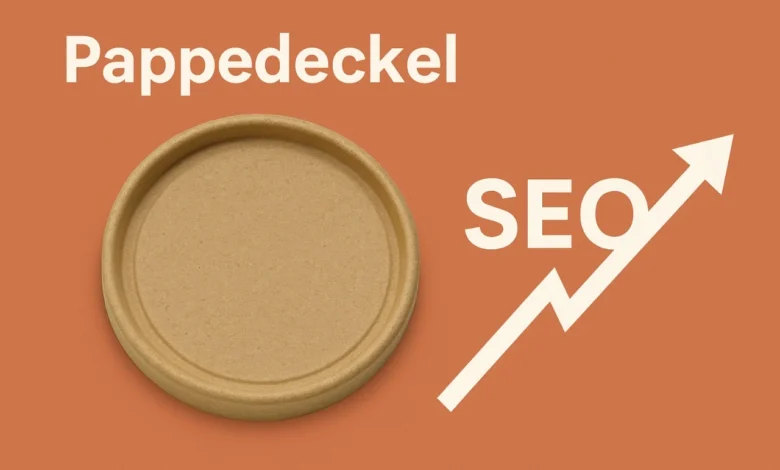
In German culture, everyday objects often carry meanings that are both practical and symbolic. One such object is the Pappedeckel, a simple cardboard coaster that has been part of daily life for decades. At first glance, it may appear to be just a small, disposable item placed under a glass or bottle. Yet, behind its simplicity lies a long tradition of utility, sustainability, and cultural value. This article explores what a Pappedeckel is, its uses, the different types available, and the benefits it continues to provide in modern times.
What Is a Pappedeckel?
The term Pappedeckel literally translates to “cardboard lid” or “cardboard cover.” Traditionally, it refers to the round cardboard coasters often used in Germany, particularly in pubs, beer gardens, and restaurants. They are designed to protect tables from spills, condensation, and stains. In addition, Pappedeckel often serve as makeshift notepads where customers or servers might jot down orders or even tally the number of drinks consumed. Though basic in design, the item reflects practicality and clever resourcefulness.
Historical Background
The history of the Pappedeckel dates back to the 19th century. Before cardboard, people used small wooden discs or felt mats to protect surfaces. The shift to cardboard was revolutionary because it was inexpensive, easy to produce, and disposable. German beer culture in particular adopted the Pappedeckel widely, and over time, it became an essential part of social gatherings. Breweries also realized that the coaster could double as a marketing tool, printing logos and artwork on its surface.
Everyday Uses of Pappedeckel
The most obvious use of a Pappedeckel is to act as a coaster, protecting furniture from moisture and damage. However, its uses go beyond this simple function. In many pubs, bartenders still use coasters to mark drink counts by making small pen marks directly on them. Customers sometimes write notes, doodles, or even exchange messages on them. Collectors also value coasters as unique cultural artifacts, especially those carrying vintage brewery designs. In everyday homes, Pappedeckel are handy for hosting guests, reducing the need for constant cleaning and protecting tables.
Different Types of Pappedeckel
Though the classic design is a round, thick cardboard disc, Pappedeckel comes in several variations. The most common types include:
Round Coasters
The traditional circular shape is the most widely recognized. These are standard in beer halls and restaurants.
Square Coasters
Less traditional but increasingly common, square coasters provide a modern twist while offering the same protection.
Customized Pappedeckel
Many businesses customize their Pappedeckel with logos, advertisements, or event information. This turns the coaster into both a functional item and a branding opportunity.
Collectible Pappedeckel
Some coasters are designed with special artwork, limited-edition prints, or commemorative messages. Collectors often seek these for their historical and aesthetic value.
Benefits of Using Pappedeckel
The Pappedeckel may seem small, but it carries several benefits that make it both practical and environmentally relevant.
Protection for Surfaces
The most obvious benefit is protecting wooden, glass, or plastic surfaces from stains, rings, and scratches.
Hygiene and Cleanliness
By providing a barrier between drinks and tables, Pappedeckel help maintain hygiene, especially in public spaces where multiple customers share the same surfaces.
Cost-Effective and Disposable
Pappedeckel are inexpensive to produce and easy to replace, making them a convenient option for restaurants, bars, and homes.
Eco-Friendly Choice
Most Pappedeckel are made from recycled cardboard and can be recycled again after use. This makes them an environmentally responsible option compared to plastic alternatives.
Cultural and Social Value
Beyond function, the Pappedeckel has cultural significance in German beer traditions. For collectors, it holds nostalgic and artistic value.
Pappedeckel in Modern Times
In today’s world, sustainability and branding have made the Pappedeckel even more relevant. Businesses see it as a cost-effective way to promote their identity, while eco-conscious customers appreciate its recyclability. Designers have also embraced the item, creating innovative patterns and styles that turn a simple coaster into a piece of art. In households, Pappedeckel remain popular for everyday entertaining, proving that even in the digital age, small traditions survive.
Collecting Pappedeckel as a Hobby
For many, collecting Pappedeckel has grown into a unique hobby. Clubs and associations exist where enthusiasts trade coasters, catalog designs, and preserve historic pieces. Collectors often seek coasters from different breweries, events, or countries. This practice highlights how something so simple can transform into a form of cultural preservation.
Final Thoughts
The Pappedeckel may seem like an unremarkable object, but its role in culture, hospitality, and sustainability makes it much more than a cardboard disc. It protects surfaces, promotes hygiene, supports branding, and connects people to traditions that have lasted for centuries. Whether in a German beer garden, a modern café, or a family home, the Pappedeckel remains a small but essential part of everyday life. Its continued use proves that sometimes the simplest items hold the greatest significance.




